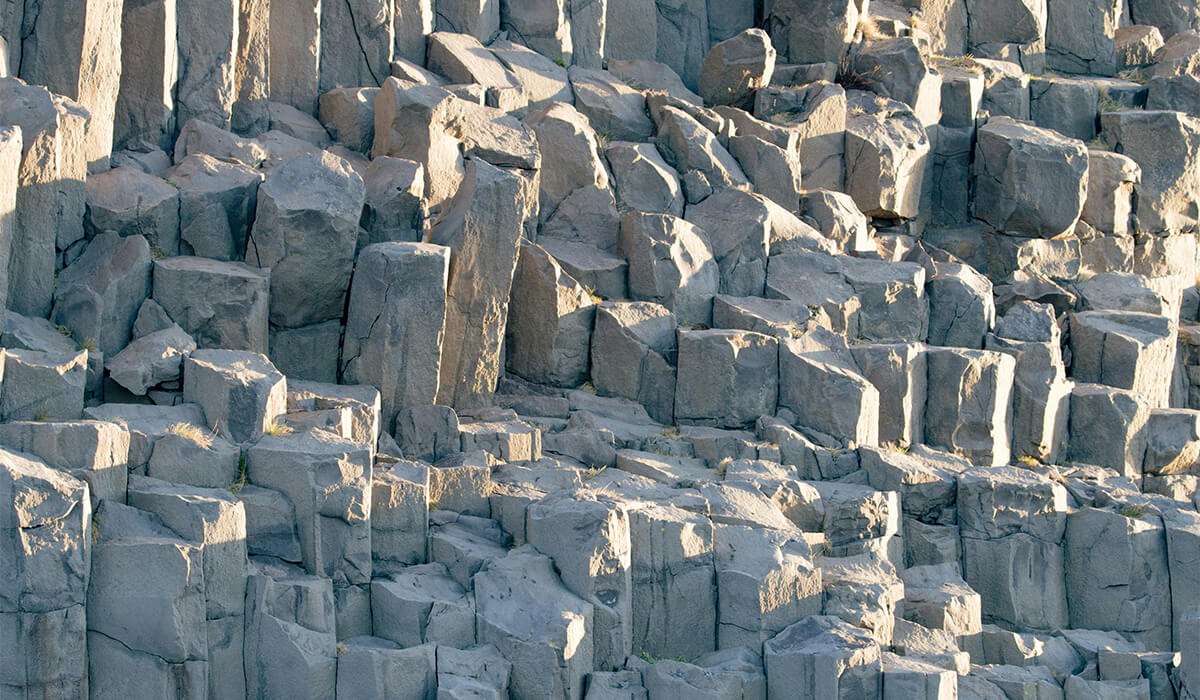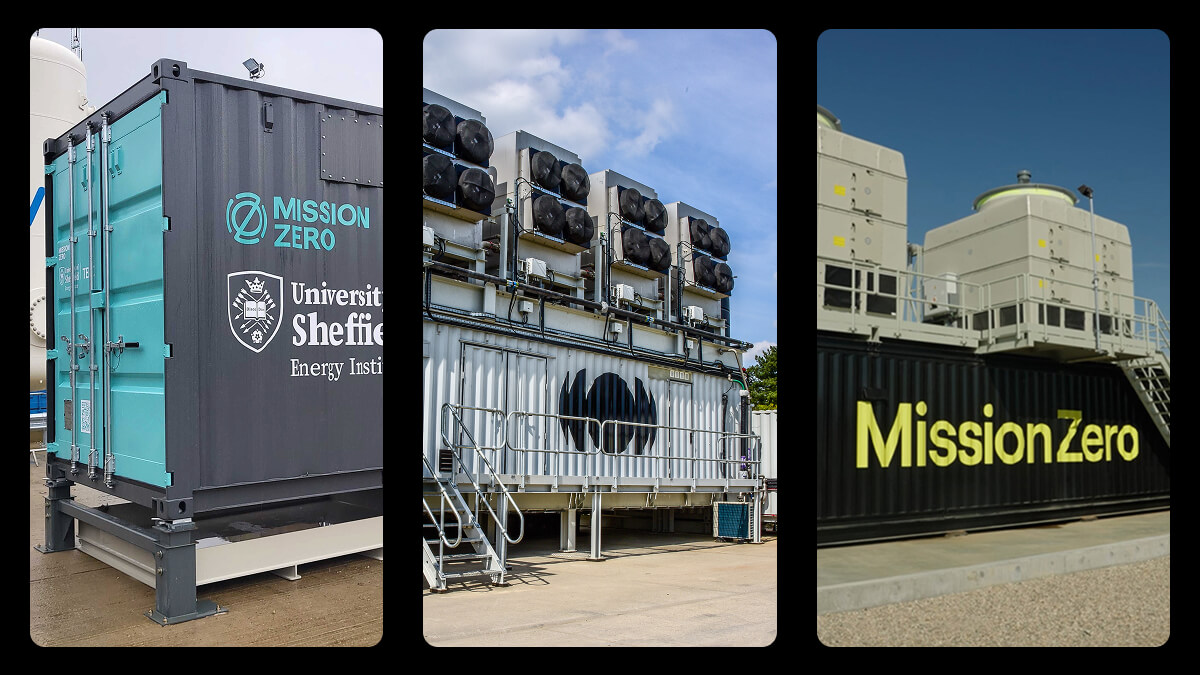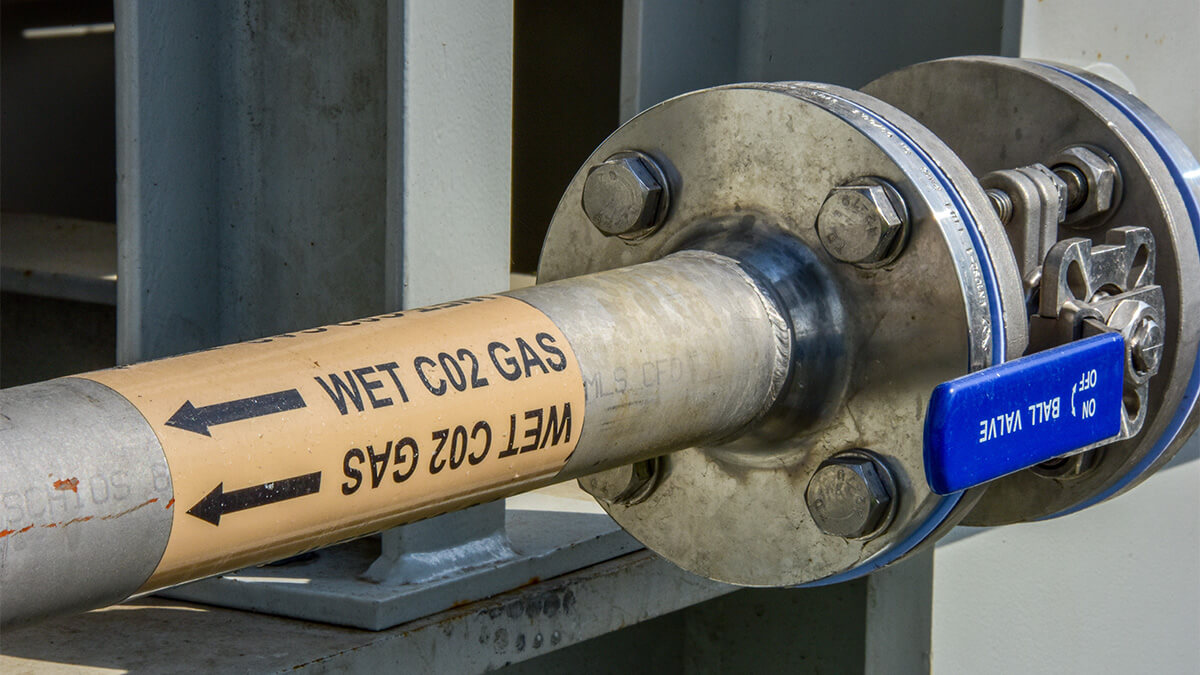We need to remove around 7–9 billion tonnes of CO2 from the atmosphere annually by 2050 to limit global warming to 1.5C above pre-industrial temperatures. Alongside nature-based approaches like reforestation, new technological solutions like direct air capture (DAC) promise powerful tools for getting there.
Yet, the carbon removed by these technologies has to go somewhere. This is where geological carbon storage comes in — offering a secure, long-term means to lock CO₂ deep underground in natural rock formations for thousands of years.
In this piece, we'll explore the main types of geological carbon storage available today — addressing the world’s potential storage capacity and considerations around each storage pathway to better understand how to make informed decisions to scale carbon removal effectively.
What is geological carbon storage?
Geological carbon storage involves injecting CO₂ into deep underground rock formations where it can be safely stored for thousands or even millions of years. Think of it as returning carbon to the earth — storing it in the same types of geological structures that have held oil, gas, and naturally occurring CO₂ for millennia.
There are two key elements to any geological storage site: the type of storage (where the CO₂ goes) and the trapping mechanism (how it stays there).
Geological carbon removal: Storage types
When it comes to sites for storing atmospheric CO₂, these formations are particularly appealing from a long-term security perspective.
Depleted oil and gas reservoirs
Depleted oil and gas reservoirs are exactly what they sound like – geological formations where oil and gas have already been extracted. After decades of production, these reservoirs are largely empty and ready for a new purpose.
These sites are particularly promising for several reasons. Years of extraction mean we have detailed seismic data, understand the rock types, and know their porosity, permeability, and position relative to fault lines. Essentially, the oil and gas industry has already done the geological homework. More importantly, these formations have proven their ability to trap substances securely. They've held naturally occurring CO₂, oil, and gas for millions of years – making a pretty convincing record.
Important considerations — It's crucial to note that depleted reservoirs only deliver carbon-negative outcomes when CO2 storage doesn't enhance the recovery of remaining oil or gas. Climate benefit is only realised when any residue remains sequestered during the injection of CO2.
Saline aquifers
Saline aquifers are deep underground rock formations saturated with saltwater. These formations are found at depths typically ranging from 800 to 3,000 metres below the Earth's surface, where injected CO2 can be dissolved into brine before eventually mineralising into solid carbonate rock.
They're found across virtually every continent in both onshore and offshore locations, offering a huge potential storage capacity that remains largely untapped for commercial use. Because these formations contain unusable saltwater rather than freshwater, they avoid any conflict with drinking water or agricultural needs, making them well-suited for carbon storage deployment.
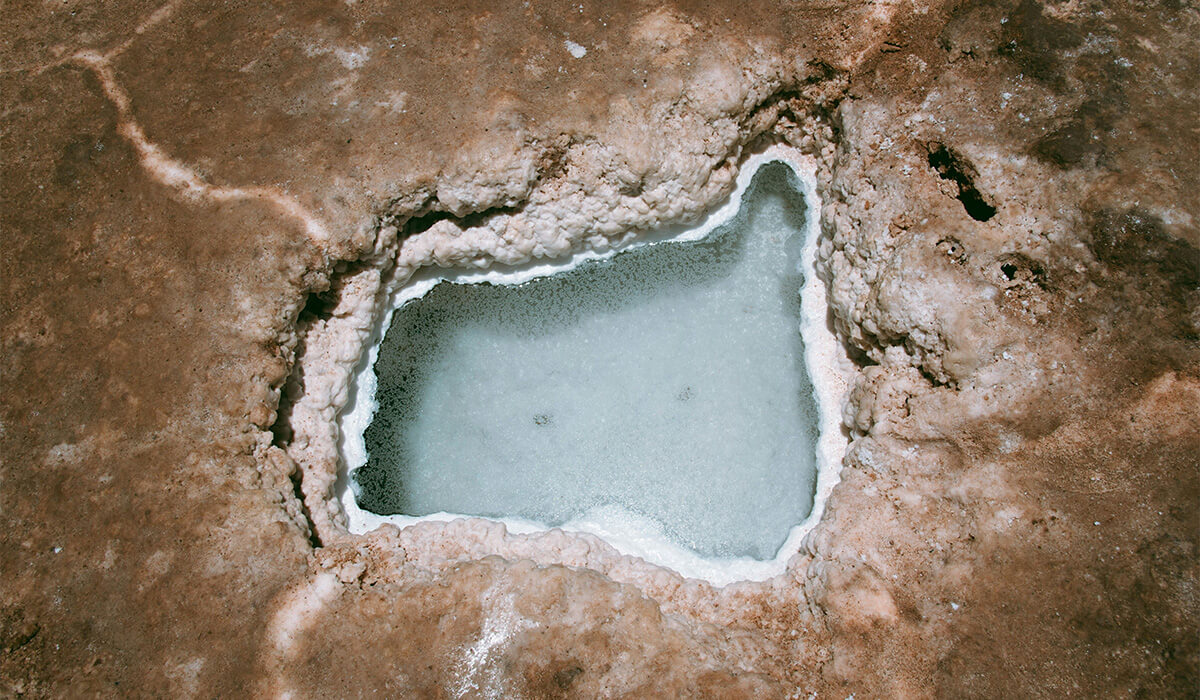
Rock formations
Basalt, a type of igneous rock formed from solidified lava, represents the most studied pathway for permanently storing CO₂ through mineralisation. Large basalt formations around the world — from Iceland to the Pacific Northwest to India — offer a geologically unique storage option.
What makes basalt special is its mineralogical composition. The rock contains high levels of calcium, magnesium, and iron-rich minerals that are particularly reactive with CO₂. This means basalt formations don't just store CO₂ – they can permanently lock it away by transforming it into solid rock through chemical reactions. While all geological storage aims for permanence, basalt's reactive nature provides an additional layer of assurance through CO2 mineralisation.
While basalt is the most well-explored option, other ultramafic rocks like peridotite — which contains even higher concentrations of reactive magnesium — show promise for faster mineralisation and expanded storage capacity as technology develops.
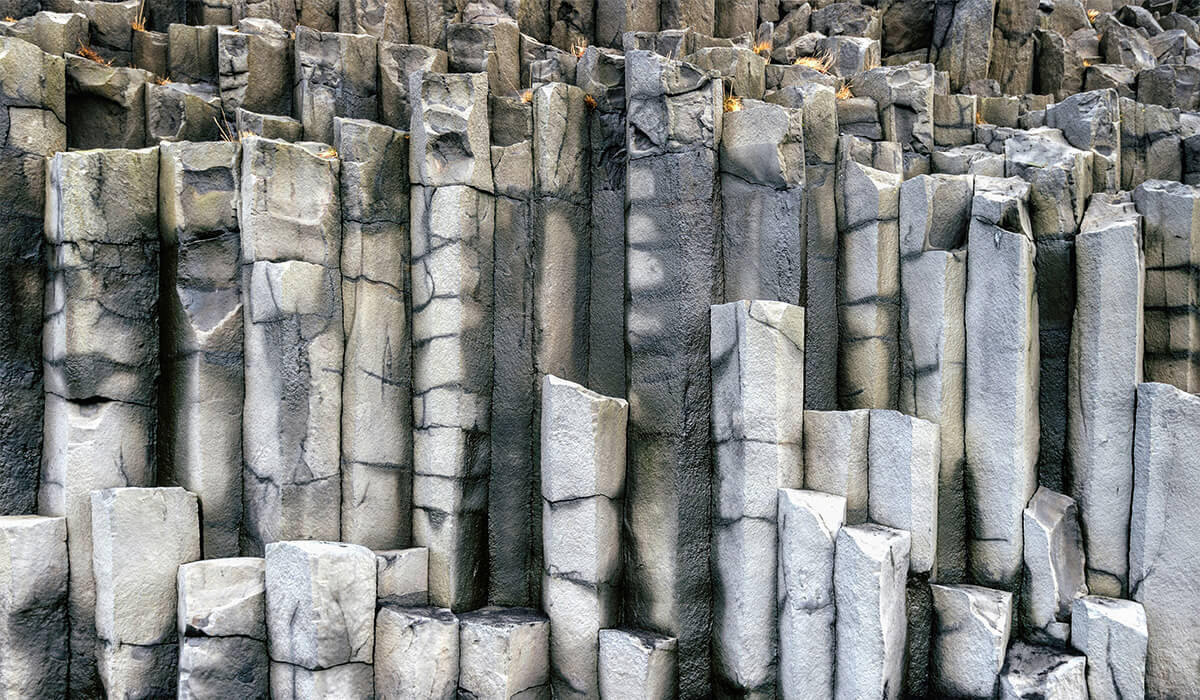
Geological storage of carbon dioxide: Trapping mechanisms
Understanding where CO₂ is stored is only half the picture. Equally important is understanding how it stays there. Several trapping mechanisms work to keep CO₂ locked securely underground, and in many cases, multiple mechanisms work together at the same site to provide layers of security.
Structural trapping
This is perhaps the most straightforward mechanism – think of it as a physical lock. CO₂ is injected into porous rock formations, where it fills the tiny spaces between rock grains. Above this sits an impermeable layer of caprock that acts as a seal, physically preventing the CO₂ from migrating upward.
This mechanism has been proven effective over geological timescales. Structural trapping is commonly used in depleted oil and gas reservoirs and saline aquifers.
Solubility trapping
In formations containing saltwater — such as saline aquifers — injected CO₂ gradually dissolves into the water. Once dissolved, the CO₂-rich water becomes denser than the surrounding water and sinks deeper into the formation, away from potential escape routes. Unlike a fizzy drink going flat, CO₂ stays dissolved underground because of the immense pressure at these depths.
This mechanism offers significant advantages. The dissolved CO₂ is unlikely to migrate upward as the natural density difference helps move it deeper underground over time. Solubility trapping strengthens progressively as more CO₂ dissolves, providing increasing security over months and years.
Residual trapping
After CO₂ is injected underground, some of it becomes trapped in tiny pockets within the rock. This process, known as residual or capillary trapping, provides an important extra layer of security. Although it’s not permanent in the same chemical sense as mineral trapping, it substantially reduces the risk of CO2 migration early on.
Mineral trapping
This is the ultimate form of permanent storage. Over time, dissolved CO₂ reacts chemically with minerals naturally present in the rock — particularly calcium, magnesium, and iron — to form solid carbonate minerals.
In typical geological formations this mineralisation process happens slowly over hundreds to thousands of years. However, in basalt formations, the process is dramatically quicker. The highly reactive minerals in basalt mean that pioneering projects have demonstrated accelerated mineralisation occurring within one to two years, though precise timescales can vary depending on specific site conditions.
Once CO2 mineralisation is complete, the storage is genuinely permanent. The CO₂ is no longer gas or liquid – it's solid rock, eliminating any possibility of leakage.
Why do we need geological carbon storage?
There's no silver bullet for carbon storage — we need a balanced mix of solutions working together. But when it comes to storing the billions of tonnes of CO₂ we need to remove from the atmosphere, geological storage of carbon dioxide offers something unique: the ability to handle massive volumes safely, affordably, and permanently.
Geological storage builds on decades of proven experience from the oil and gas industry. We're not starting from scratch — we're applying established expertise and monitoring technologies to climate solutions. This track record matters when we're talking about storing CO₂ for thousands of years. It also means the skilled workforce already exists, with geological storage creating pathways for oil and gas professionals to redirect their expertise towards climate solutions and support a just energy transition.
The economics are compelling. While geological storage requires upfront capital investment, levelised costs sit at $4-45 per tonne of CO₂ – one of the most cost-effective options available today. With scale, costs are expected to drop toward the lower end of this range.
Where large volumes of storage capacity exist in concentrated areas, direct air capture technologies can supply atmospheric CO₂ to match these requirements, creating an efficient and scalable carbon removal combination.
At Deep Sky's carbon removal hub, our technology has enabled North America's first geological storage of CO₂ captured directly from the atmosphere.
Is geological carbon removal safe?
Geological storage is well understood from a regulatory perspective, with stringent monitoring requirements and agreed standards on factors like storage depth. In locations where specific regulations don't yet exist, it’s possible to easily adapt proven standards from elsewhere.
Setting up a CO₂ storage site takes years of careful study and assessment. Every potential reservoir undergoes thorough geological surveys and risk assessments before any CO₂ is injected. This deliberate thoroughness ensures safety from the start.
Well-regulated storage sites are estimated to retain 98% of their CO₂ over 10,000 years. While public perception sometimes focuses on small risks like seismic activity, the actual chance of CO₂ escaping a properly managed underground reservoir is very low. Natural gas has sat underground for millions of years using the same geological principles — once CO₂ is trapped, the closed environment and impermeable caprock barriers provide durable, long-term security.
How long does geologically stored carbon actually stay in the ground?
When we talk about geological storage, we're talking about genuine permanence — CO₂ stored for thousands of years, measured on geological timescales rather than human ones.
As time passes, that security only strengthens. Initially, CO2 is held in place by a physical barrier of impermeable caprock. Over the coming months and years, solubility trapping dissolves CO₂ into salt water, making it denser and pulling it deeper. Mineral trapping gradually transforms the CO₂ into solid rock. These mechanisms work over decades and centuries to make storage increasingly permanent.
The durability isn't theoretical — it's proven by nature itself. The question isn't whether geological formations can hold CO₂ securely, but rather ensuring we select and manage sites properly to replicate what geology has been doing successfully for millions of years.
How much carbon can we potentially store geologically?
Geological storage isn't working alone — it's one part of a broader carbon removal toolkit that includes ocean-based solutions, biomass, and carbon-trapping products. Yet, when we look at the sheer scale of what geological formations can handle, the numbers are reassuring.
The world's storage potential varies dramatically across scientific literature, with some studies suggesting up to 55,000 gigatonnes of capacity, and others pitching more conservatively in the thousands. This huge range can be explained by the varying depth and scope of each analysis. For example, while recent studies account for whether geologic storage solutions are actually viable, newer methods like mineralisation are completely omitted from this research, meaning the global map of potential storage still has major gaps.
Even if we focus on the more conservative end of the scale, which identifies approximately 1,460 gigatonnes of viable geological storage capacity globally, the picture is still optimistic. In 2023, global CO₂ emissions reached nearly 38 gigatonnes. If we were capturing all current emissions (which we're not), that's roughly 38 years of capacity. But here's where things improve significantly.
We're not aiming to store all emissions — we're working to eliminate the dangerous excess of CO2 in the atmosphere. After aggressive decarbonisation, estimates suggest around 18% residual emissions will remain from harder-to-abate sectors. At that rate, identified geological storage capacity stretches to over 200 years. Factor in that analysis projects we'll need approximately 4.4 gigatonnes per year of combined storage by 2050 (harnessing CCS, bioenergy with CCS and DAC), and we're looking at more than 300 years of capacity.
These figures tell an important story, but they're not the whole picture. Storage capacity isn't static — it grows as our technology and geological understanding advance, unlocking formations we can't access today. What’s more, as emissions decline through decarbonisation, the amount we need to remove decreases over time.
The takeaway? Geological storage capacity is substantial and will only expand as technology improves. Combined with declining emissions and complementary carbon removal pathways, we have the geological capacity to handle the task ahead.
What will it take to scale mineralisation as a geological storage route?
Mineralisation in basalt formations represents one of the most exciting pathways for the permanent geological storage of carbon dioxide. Small-scale projects have successfully demonstrated its potential — now the challenge is proving it works reliably at commercial scale across different formations and climates.
The barriers are familiar but surmountable. Developing mineralisation infrastructure requires significant upfront capital investment, though operational costs remain low once systems are running. Site characterisation, permitting, and infrastructure development all take time, which means we need to start building capacity now to meet future demand. Clear policy frameworks and incentives will be crucial here — the right regulatory signals can unlock capital and accelerate deployment timelines dramatically.
The good news? Other geological storage pathways provide immediate capacity while mineralisation scales — they're complementary solutions, not competing ones. Mineralisation also opens doors in geographies that lack suitable depleted reservoirs or saline aquifers, broadening the global reach of carbon storage.
Mineralisation technology is already advancing beyond purely geological applications. Projects like our work with O.C.O Technology demonstrate how mineralisation can be harnessed to make socially valuable products which double as carbon sinks — in this case, mineralising atmospheric CO₂ with industrial waste to create carbon-negative building aggregates for low-carbon construction. It's another pathway forward that shows the versatility of turning CO₂ into rock.
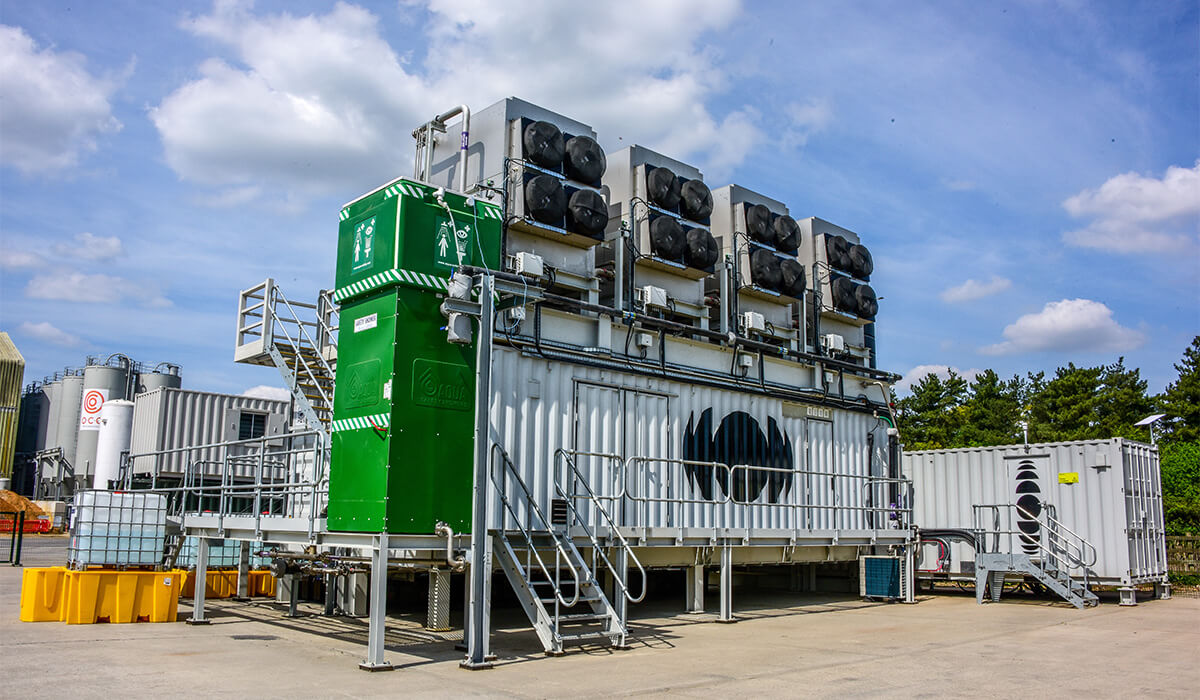
Geological carbon removal with direct air capture
The formations exist, the trapping mechanisms are proven, the capacity is substantial, and — unlike many emerging climate technologies — geological storage builds on decades of operational experience, with monitoring systems and regulatory frameworks already in place. From depleted oil and gas reservoirs to vast saline aquifers and reactive basalt formations, we have multiple pathways to safely store billions of tonnes of CO₂ underground for thousands of years.
The challenge now isn't whether geological storage can work — it's how quickly we can deploy it alongside the carbon removal technologies needed to serve it. Our third deployment with Deep Sky in Canada demonstrates this combination in action: capturing CO₂ directly from the atmosphere and delivering it for secure geological carbon storage. As we continue to scale DAC globally, geological storage provides the durable, cost-effective endpoint that makes high-quality carbon removal possible.



